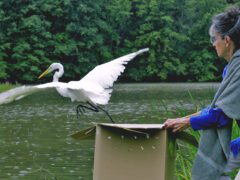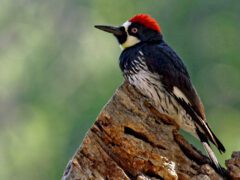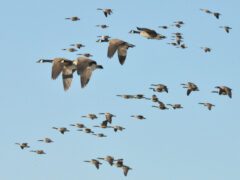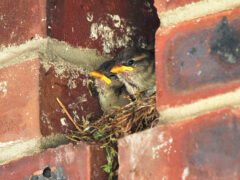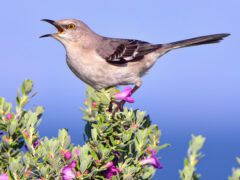Cinnamon Teal Photo Gallery
Male
Breeding males have a deep brownish-red body with a long black bill, red eye, and a black back and rear.
© Ad Konings / Macaulay LibraryTexas, January 03, 2021Female
Females and nonbreeding males have a coarsely marked brown body with faint darker eyeline and cap, and a long black bill.
© Darren Clark / Macaulay LibraryIdaho, April 15, 2019Typically found in shallow freshwater wetlands such as marshes, flooded fields and ditches, ponds, and slow streams.
© Larry Arbanas / Macaulay LibraryCalifornia, May 13, 2005Not all videos have soundMale
Occurs in freshwater marshes with emergent vegetation and other types of wetlands.
© German Garcia / Macaulay LibraryCiudad de México, October 27, 2018Male
In flight note the green secondaries and powdery-blue shoulder.
© Alex Lamoreaux / Macaulay LibraryOregon, May 23, 2019Male and female
Note the plain-faced look on the female and the bright cinnamon-colored male.
© Matt Davis / Macaulay LibraryCalifornia, April 02, 2016Molting male
Males in nonbreeding plumage are more subdued in coloration. Their red eyes help to differentiate them from similar nonbreeding Blue-winged Teal.
© Sharif Uddin / Macaulay LibraryCalifornia, December 13, 2020Male
In flight shows bright white underwings.
© Matt Davis / Macaulay LibraryCalifornia, January 28, 2017Nonbreeding male
Males have bright powder blue wing patches in breeding and nonbreeding plumages.
© Ad Konings / Macaulay LibraryTexas, September 15, 2020Female and chick
Average clutch size ranges from 8–11.
© Mark Baldwin / Macaulay LibraryOregon, August 03, 2021Compare with Similar Species
Click on an image to compare
Species in This Family
Ducks, Geese, and Waterfowl(Order: Anseriformes, Family: Anatidae)
More to Read
Don't miss a thing! Join our email list
The Cornell Lab will send you updates about birds,
birding, and opportunities to help bird conservation.























































